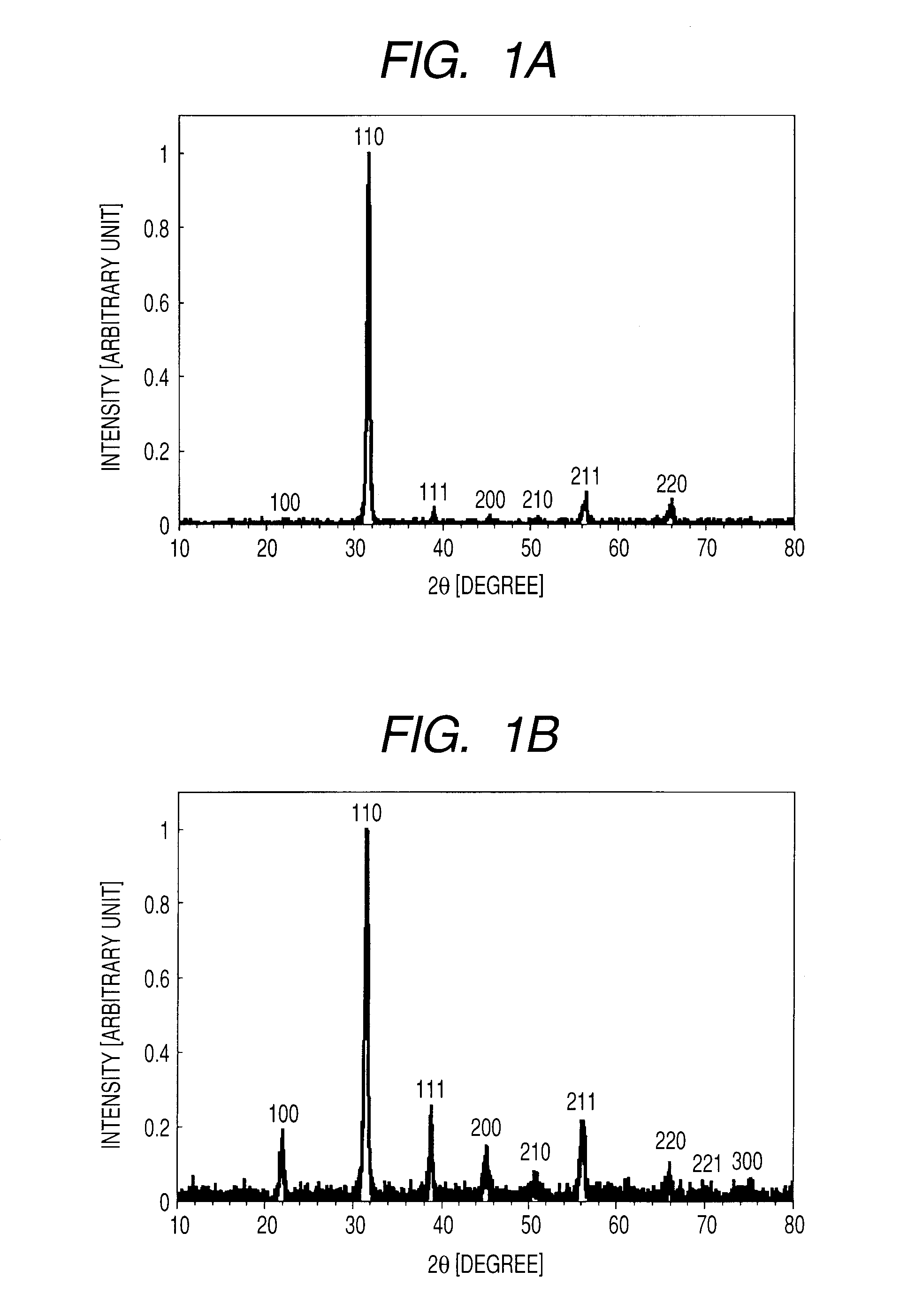Ceramic, piezoelectric device, and production method thereof
- Summary
- Abstract
- Description
- Claims
- Application Information
AI Technical Summary
Benefits of technology
Problems solved by technology
Method used
Image
Examples
example 1
[0082]In xBiFeO3-(1-x)BaTiO3 (0≦x≦1), the production of a piezoelectric ceramic, in which x=0.7, is performed as described below.
[0083]BiFeO3 powder was obtained as follows. Bismuth oxide and ferric oxide powder are subjected to weighing to obtain the same molar amount, and mixed thereafter. Bi has a high vapor pressure, and hence there is a fear of a shortage of Bi. As a result, it is preferred to add an excessive amount of Bi than the above-mentioned molar ratio. Next, the mixture is subjected to calcination for five hours at temperatures of from 500° C. to 700° C. under an atmospheric environment within an alumina crucible using an electric furnace. After that, after grinding the calcination powder within a mortar, the calcination was carried out again for five hours at temperatures of from 500° C. to 700° C. under an atmospheric environment.
[0084]As the BaTiO3 powder, BT01 (manufactured by Sakai Chemical) having an average particle diameter of 100 nm was used. The above-mentione...
examples 2 to 5
[0087]In xBiFeO3-(1-x)BaTiO3 (0≦x≦1), the productions of the sintered bodies are conducted as in Example 1 at sintering temperatures shown in Table 1.
example 6
[0090]In xBiFeO3-(1-x)BaTiO3(0≦x≦1), the production of the piezoelectric ceramics, in which x=0.7, was performed by subjecting BiFeO3 and BaTiO3 to calcination as described below, followed by being dissolved and then being subjected to the orientation step.
[0091]Bismuth oxide and iron oxide powder and BaTiO3 were subjected to weighing so as to obtain a molar ratio of x=0.7, and mixed thereafter. Bi has a high vapor pressure, and hence there is a fear of a shortage of Bi. Accordingly, it is preferred to add an excessive amount of Bi than the above-mentioned molar ratio. As the BaTiO3, BT01 manufactured by Sakai Chemical (average particle diameter of 100 nm) was used. After that, as in Example 1, the calcination is performed to obtain the calcination powder. FIG. 4 shows an SEM photograph of the calcination powder. It can be seen that the particle diameters of the calcination powder are distributed within a range of from 300 nm to 6 μm, and each has an isotropic shape. The calcination...
PUM
| Property | Measurement | Unit |
|---|---|---|
| Fraction | aaaaa | aaaaa |
| Fraction | aaaaa | aaaaa |
| Temperature | aaaaa | aaaaa |
Abstract
Description
Claims
Application Information
 Login to View More
Login to View More - R&D
- Intellectual Property
- Life Sciences
- Materials
- Tech Scout
- Unparalleled Data Quality
- Higher Quality Content
- 60% Fewer Hallucinations
Browse by: Latest US Patents, China's latest patents, Technical Efficacy Thesaurus, Application Domain, Technology Topic, Popular Technical Reports.
© 2025 PatSnap. All rights reserved.Legal|Privacy policy|Modern Slavery Act Transparency Statement|Sitemap|About US| Contact US: help@patsnap.com



